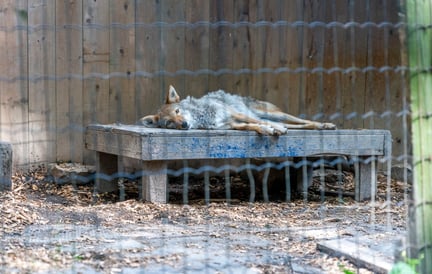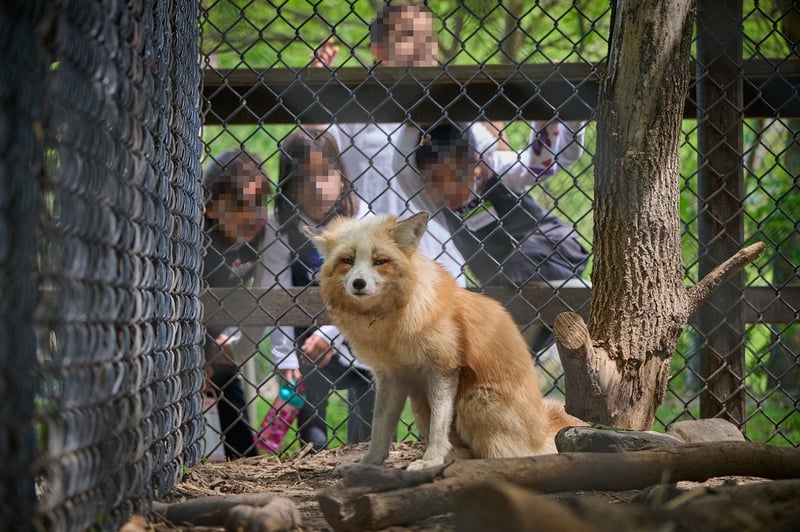
I thought I knew what I was getting into, but Ontario’s unregulated roadside zoos were worse than I could imagine.
In many Ontario cities, there are no regulations against keeping exotic wild animals like tigers or monkeys. Almost anyone can acquire wild animals, nail together a few cages, stick up a sign and call themselves a zoo. These are the places we call roadside zoos.
Unlike larger, accredited zoos that are designed to provide a natural habitat for animals, roadside zoos are often small, poorly maintained facilities that may house animals in cramped, unsanitary conditions. To open a zoo, no training or education is necessary, and no business, financial or emergency planning is required.
In 10 days, I visited a number of roadside zoos all across Ontario. Here’s what I saw:
- Poorly designed, ‘Do-It-Yourself' enclosures. These DIY enclosures are a safety concern for both animals and visitors – injuries and escapes can and do happen.
- Small barren cages. Animal enclosures were often small and filthy. Animals didn’t have enough space or enrichments to express their natural behaviours. Most enclosures had little or no greenery, and sometimes barely even sunlight.
- Nowhere to hide. Roadside zoos are built for the visitors, not the animals. The enclosures leave nowhere for the animals to hide if they want to – and it was clear to me that they wanted to!
- Pacing, pacing, pacing. I saw animals pacing, biting their own tails, and other signs of self-harm—signs of deep psychological distress. Most of the animals paced so repeatedly that they had worn down paths in the grass where they walked – if they even had access to grass.
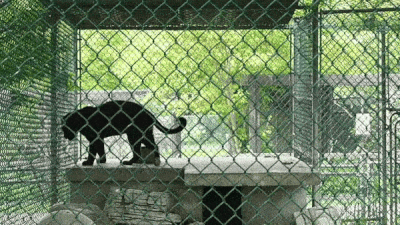 A black jaguar pacing back and forth. Video has been sped up and cropped. (Video: Sasha Rink / World Animal Protection)
A black jaguar pacing back and forth. Video has been sped up and cropped. (Video: Sasha Rink / World Animal Protection)
- Misleading information about wildlife conservation. People visit these zoos thinking they’re supporting conservation or rescued animals. But roadside zoos do very little, if anything, for the conservation of vulnerable species. Animals are bought or bred for a life in captivity.
These issues weren’t just at one roadside zoo, they were at all of them.
As an animal-lover, and guardian of a micro-panther (i.e. a black house cat), I couldn’t help but see suffering everywhere I looked. When I saw a black jaguar pacing endlessly in a barren cage surrounded by their own 💩, my heart broke.
I thought of my boy, Wesley. House cats have been domesticated for thousands of years. His needs are quite a bit different than a wild cat native to the Americas. Wesley weighs 15 lbs, enjoys multiple rooms, beds, toys, hiding places and a clean litter box every day.
Meanwhile, this black jaguar has all the same needs as his counterparts living in the wild. He weighs 5-8x more than Wesley, but lives in the equivalent of my guest room. He paced around one small part of the enclosure the entire time we were there.
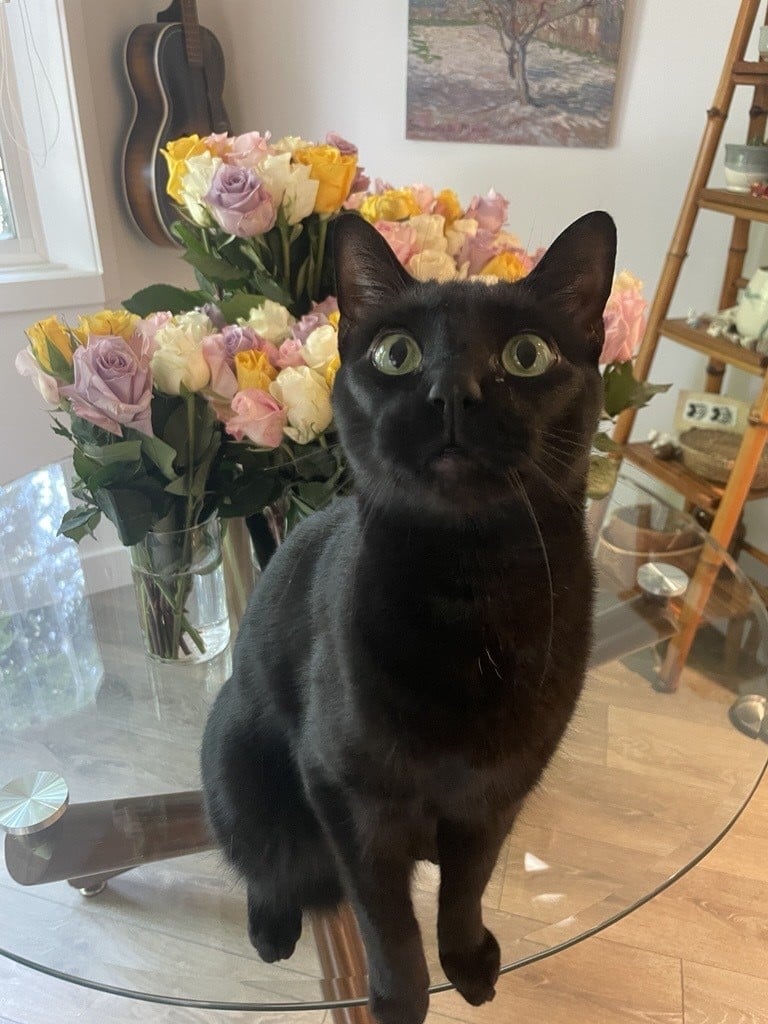 Wesley, the “micro-panther” (aka domestic house cat), who has more space and enrichment than the captive jaguar.
Wesley, the “micro-panther” (aka domestic house cat), who has more space and enrichment than the captive jaguar.
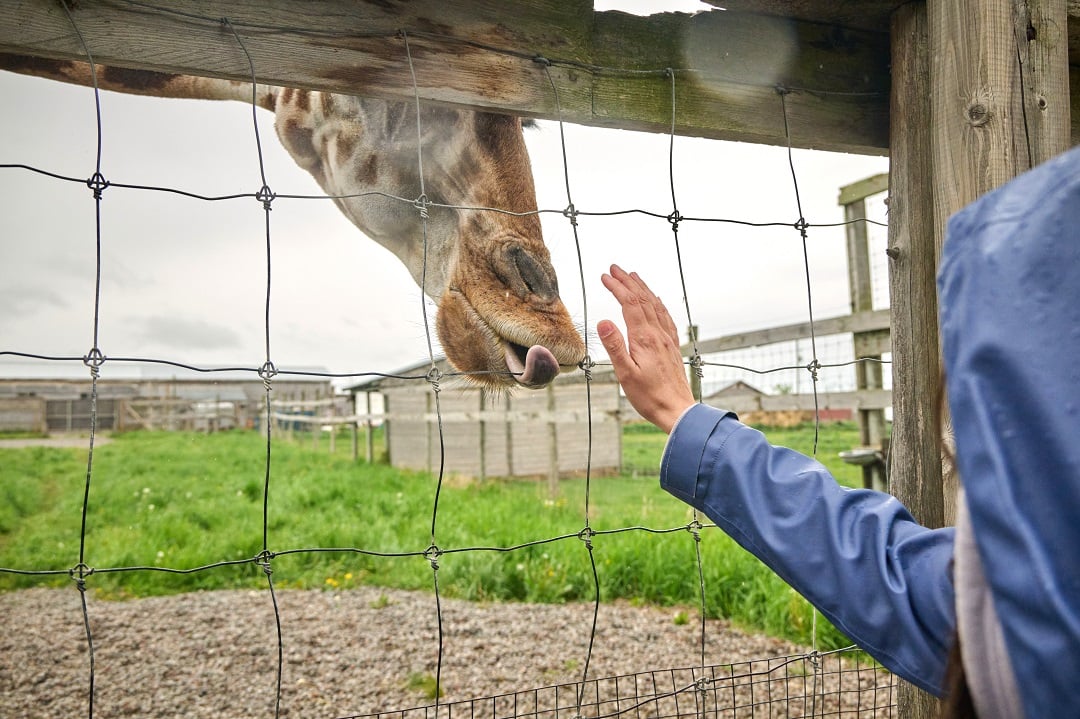 Photo: Sasha Rink / World Animal Protection
Photo: Sasha Rink / World Animal Protection
Fun for the whole family?
That’s how these places are advertised. But what I saw was far from educational – or fun really – for anyone truly thinking about the animals.
The roadside zoos I visited were filled with picnic tables and playgrounds, trying to pass themselves off as family-friendly destinations. But the animals weren’t the focus.
Children either harassed the animals, despite signs telling them not to, or quickly lost interest in them. I witnessed kids sprinting past enclosures with barely a glance towards the animals inside. Within 30 minutes of arrival, nearly every child had abandoned the animals in favour of the playground.
This highlights what we already know: wild animals don’t belong in cages for entertainment, especially when no one is learning anything meaningful about them. Roadside zoos set a poor standard for how we see and treat captive wildlife.
Hope for captive wildlife
At the end of it all, I ended my trip with some hope.
On May 29, I joined our Executive Director and colleagues from the Toronto Zoo, as MPPs Lucille Collard (Ottawa—Vanier) and Karen McCrimmon (Kanata—Carleton) announced the reintroduction of the Captive Wildlife Protection Act, 2025.
The Bill would:
- 📝 Introduce mandatory licensing
- 🕵️ Enforce annual inspections and stringent animal welfare and public safety standards
- ⛔ Put an end to the use of wild animals for entertainment
- 📖 Require trained, experienced staff and proof of financial stability
- 🔥 Ensure that all zoos have emergency preparedness plans
If passed, this Bill would finally bring Ontario in line with regulations in other provinces for the treatment of captive animals.
📢 If you live in Ontario, write a letter or email to your MPP to let them know you support this bill! (Find your MPP and their contact info here)
🐾 And take the pledge to never visit a roadside zoo!
Every voice counts. By refusing to support these cruel attractions, you're helping protect wild animals from a life of confinement, distress and neglect disguised as entertainment.
Sign the pledge to avoid roadside zoos!
As you’re looking for activities this summer whether in your own province, across Canada or abroad: pledge to skip the visit to roadside zoos.
Photos: Sasha Rink / World Animal Protection
